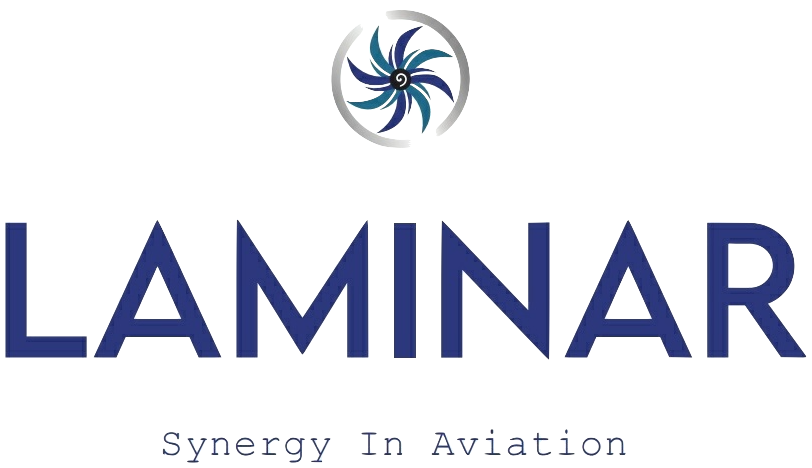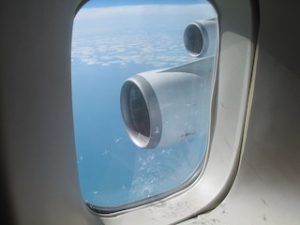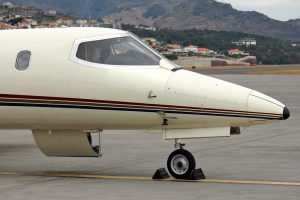Integrating VR And AR Into Line Oriented Flight Training (LOFT) Program
 The aviation industry is in the midst of a technological revolution, with Virtual Reality and Artificial Intelligence playing pivotal roles in transforming training methodologies. Line Oriented Flight Training, a crucial component of pilot education, is increasingly incorporating these advanced technologies to enhance training efficacy and realism. This article explores how VR and AI are integrated into LOFT programs, examining the benefits, applications, and future prospects of these technologies in aviation training.
The aviation industry is in the midst of a technological revolution, with Virtual Reality and Artificial Intelligence playing pivotal roles in transforming training methodologies. Line Oriented Flight Training, a crucial component of pilot education, is increasingly incorporating these advanced technologies to enhance training efficacy and realism. This article explores how VR and AI are integrated into LOFT programs, examining the benefits, applications, and future prospects of these technologies in aviation training.
Understanding Line Oriented Flight Training program
Line Oriented Flight Training is designed to prepare pilots for the complexities of real-world flight operations by simulating realistic flight scenarios. Unlike traditional training methods that may focus solely on specific skills or procedures, Line oriented flight training program aims to provide a comprehensive training experience that integrates various aspects of flight operations, including decision-making, crew resource management, and emergency response.
Key components of LOFT
- Scenario-based training: LOFT involves creating detailed flight scenarios that mimic real-world conditions, including weather, air traffic, and system failures. These scenarios challenge pilots to apply their knowledge and skills in a dynamic environment.
- Full Flight Simulators (FFS): High-fidelity simulators replicate the aircraft’s systems, cockpit environment, and handling characteristics, providing an immersive training experience.
- CRM and human factors: LOFT emphasises effective communication, teamwork, and decision-making within the cockpit, addressing human factors that impact flight performance.
- Performance evaluation: Pilots’ performance is assessed based on their ability to handle scenarios, make decisions, and manage resources, with feedback provided for continuous improvement.
Integrating virtual reality into LOFT programs
Virtual reality has emerged as a transformative tool in aviation training, offering immersive and interactive experiences that enhance the realism and effectiveness of LOFT programs.
Benefits of VR in LOFT
-
- Enhanced immersion and realism: VR technology provides a highly immersive training environment by creating lifelike simulations of the cockpit and flight conditions. Pilots can experience a 360-degree view of their surroundings, interact with virtual controls and displays, and respond to realistic flight scenarios. This immersion helps pilots acclimate to the sensory and operational aspects of real-world flying, improving their overall training experience.
- Cost-effective training solutions: VR training can be more cost-effective than traditional methods by reducing the need for physical simulators and flight hours. VR setups can simulate various flight scenarios without the associated costs of maintaining and operating full flight simulators. This cost efficiency allows for more frequent and diverse training sessions, enhancing pilots’ preparedness and skill development.
- Flexible and adaptable scenarios: VR technology enables the creation of flexible and adaptable training scenarios. Instructors can easily modify scenarios to address specific training needs or replicate unique conditions, such as different weather patterns, air traffic situations, or emergency scenarios. This adaptability ensures that pilots receive targeted training tailored to their individual needs and progression.
Applications of VR in LOFT
-
- Pre-flight briefings and familiarisation: VR can be used for pre-flight briefings and familiarisation, allowing pilots to explore the cockpit environment, review aircraft systems, and practice procedures before actual flight training. This preparatory step helps pilots become acquainted with the aircraft and its controls, improving their efficiency during subsequent training sessions.
- Emergency training and procedure practice: VR simulations are particularly effective for emergency training and procedure practice. Pilots can experience and respond to a wide range of emergency scenarios, such as engine failures, system malfunctions, or cabin depressurization, in a controlled and safe environment. This practice helps pilots develop the skills and confidence needed to handle emergencies during real flights.
- CRM and teamwork exercises: VR can facilitate CRM and teamwork exercises by simulating cockpit environments where pilots must collaborate and communicate effectively. VR scenarios can include multiple crew members, requiring pilots to practice coordination, leadership, and conflict resolution in a realistic setting. These exercises help strengthen CRM skills and improve overall team dynamics.
Integrating artificial intelligence into LOFT programs
Artificial Intelligence is revolutionising various industries, and aviation training is no exception. AI technologies are being integrated into LOFT programs to enhance training effectiveness, personalize learning experiences, and improve performance evaluation.
Benefits of AI in LOFT
-
- Personalised training experiences: AI-driven systems can tailor training experiences to individual pilots’ needs by analysing their performance data and adapting scenarios accordingly. AI algorithms can identify areas where a pilot may need additional practice or improvement and generate customized scenarios to address these specific needs. This personalised approach ensures that pilots receive targeted training that aligns with their strengths and weaknesses.
- Real-time performance monitoring and feedback: AI can provide real-time performance monitoring and feedback during LOFT sessions. By analyzing pilot actions and decisions in real-time, AI systems can offer immediate feedback and suggestions for improvement. This real-time assessment helps pilots adjust their techniques and strategies on the fly, enhancing their learning and development.
- Adaptive scenario generation: AI-powered systems can generate adaptive scenarios that evolve based on pilot performance. For example, if a pilot successfully handles a specific scenario, the AI system can introduce additional challenges or complexity to further test their skills. This adaptability ensures that training remains relevant and progressively challenging, promoting continuous skill development.
Applications of AI in LOFT
-
- Scenario customisation and adaptation: AI can facilitate the customisation and adaptation of LOFT scenarios to meet specific training objectives. Instructors can use AI tools to design scenarios that address particular aspects of flight operations, such as emergency management or CRM. AI algorithms can also adjust the difficulty of scenarios based on pilot performance, ensuring that training remains engaging and effective.
- Behavioural analysis and decision-making: AI systems can analyse pilot behaviour and decision-making processes to provide insights into their performance. By examining factors such as reaction times, decision accuracy, and adherence to procedures, AI can identify patterns and trends that may impact flight performance. This analysis helps instructors understand pilots’ strengths and areas for improvement, guiding targeted coaching and development.
- Simulation optimisation: AI can optimise simulation experiences by analysing data from previous training sessions and identifying areas for enhancement. AI algorithms can suggest improvements to simulation scenarios, such as refining visual or motion effects, adjusting scenario parameters, or incorporating new features. This optimization ensures that LOFT simulations remain cutting-edge and effective.
Challenges and considerations
While the integration of VR and AI into LOFT programs offers numerous benefits, there are also challenges and considerations to address:
- Technical limitations and costs: Implementing VR and AI technologies requires significant investment in hardware, software, and infrastructure. Ensuring that these technologies are reliable, compatible, and up-to-date can be challenging and costly. Training organisations must carefully evaluate the cost-benefit ratio and ensure that they have the resources to support and maintain these technologies.
- Training and familiarisation: Instructors and pilots must be trained to effectively use VR and AI technologies. Familiarizing themselves with these tools and understanding their capabilities is essential for maximizing their potential. Ongoing training and support are necessary to ensure that all users can effectively utilise the technologies and integrate them into their training programs.
- Data privacy and security: AI systems collect and analyse performance data, which raises concerns about data privacy and security. Training organizations must implement robust data protection measures to safeguard sensitive information and ensure compliance with privacy regulations. Establishing clear policies and procedures for data handling and storage is essential for maintaining trust and security.
Future of VR and AI in LOFT programs
The integration of VR and AI into LOFT programs is expected to continue evolving, with several key trends shaping the future of aviation training:
- Advanced immersive experiences: As VR technology advances, future LOFT programs will offer even more immersive and realistic training experiences. Enhanced visual and motion systems, combined with improved sensory feedback, will create a more lifelike simulation environment, further enhancing pilots’ training and preparation.
- Increased AI integration: AI will become increasingly integrated into LOFT programs, with more sophisticated algorithms and analytics capabilities. AI-driven systems will offer deeper insights into pilot performance, enable more personalised training experiences, and support adaptive scenario generation for continuous skill development.
- Seamless integration and interoperability: Future LOFT programs will focus on seamless integration and interoperability between VR and AI technologies. Ensuring that these tools work together harmoniously will enhance the overall training experience and provide a cohesive and effective learning environment.
- Enhanced collaboration and networking: VR and AI technologies will facilitate enhanced collaboration and networking opportunities for pilots and instructors. Virtual training environments will enable remote participation, allowing pilots from different locations to train together and share experiences. This connectivity will expand training possibilities and foster a global network of aviation professionals.
VR and AI in LOFT
The integration of Virtual Reality and Artificial Intelligence into Line Oriented Flight Training programs represents a significant advancement in aviation training. By enhancing realism, personalizing learning experiences, and providing real-time feedback, these technologies are revolutionizing the way pilots are trained and prepared for the complexities of real-world flight operations.
As VR and AI continue to evolve, their impact on LOFT programs will grow, offering even more sophisticated and immersive training experiences. By embracing these technologies, the aviation industry can ensure that pilots are well-equipped to navigate the challenges of modern flight operations with skill, confidence, and safety. The future of LOFT is bright, with VR and AI leading the way in shaping the next generation of aviation training.










